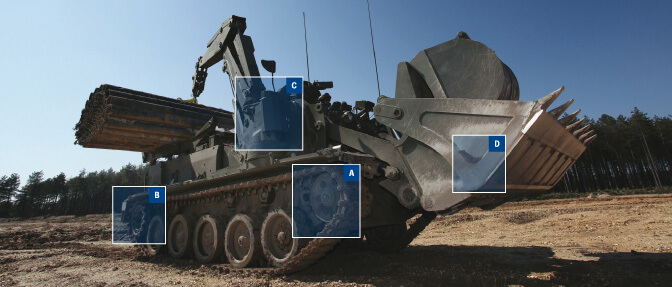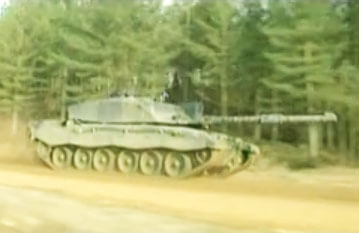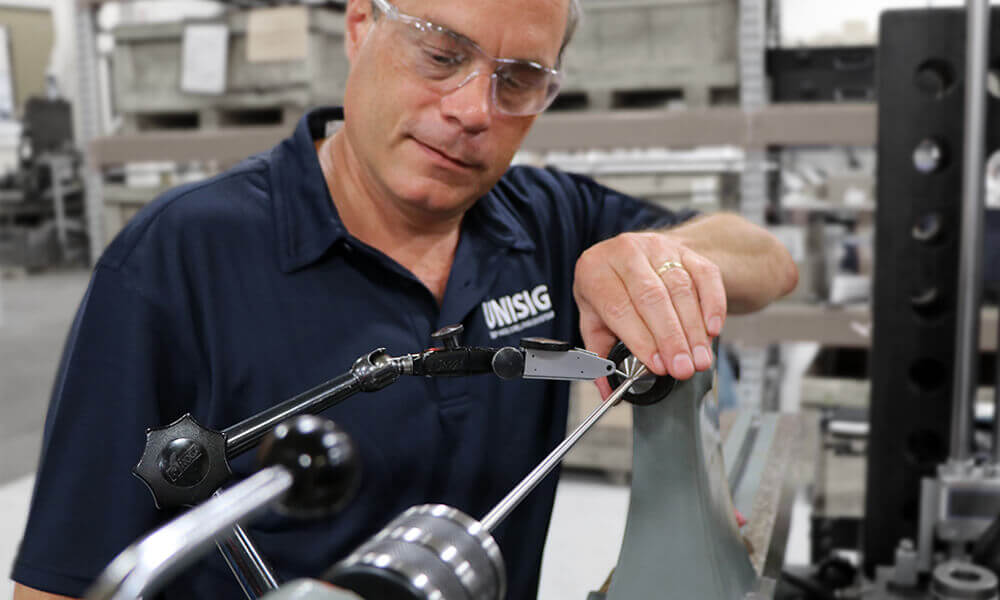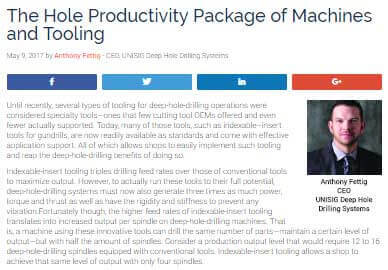Like their peers in the manufacturing sector, many deep hole drilling machine OEMs rely on commercial off-the-shelf (COTS) controls or reuse systems from other machine tool platforms they produce. This approach is efficient but often fails to provide a user interface designed specifically for deep hole drilling machines. So some deep hole drilling machine OEMs have opted for custom controls that not only enable greater levels of accuracy but also allow for the optimization of the deep hole drilling process itself.
The process requires careful operator supervision, but a well-constructed control can easily display all pertinent data necessary to facilitate the real-time management of drilling performance. To truly optimize the process, controls must allow for fast and easy on-the-fly manipulation of the most important factors in deep hole drilling: thrust load and feedrates of the drill; the tool and work spindle torque; and the coolant pressure and flow.
For machines with COTS technology or a repurposed CNC platform, such changes to or manipulation of the program after starting a drill cycle is all but impossible. With controls designed for deep hole drilling, though, overriding the program is possible during operation and encouraged.
Deep hole drilling professionals are thrilled to be able to make on-the-fly changes to the speed and torque of the spindle, as well as the feedrate and thrust load of the drill. With this fine-grained control, operators can adjust the feedrate and spindle speed to address issues like chip management and the straightness of a hole. Coolant flow can then be changed to optimize chip evacuation for that application.
Additionally, today’s deep hole drilling control systems aid users in finding the balance between job speed and tool life. As they encounter various materials, shops can make carefully graduated changes that either reduce wear on the equipment and/or tool or that shorten cycle times. Alongside spindle torque and thrust load, the coolant type, flow and pressure can all significantly affect tool life.
While controls designed for deep hole drilling allow experienced operators to make on-the-fly parameter changes, the controls also reduce the learning curve for inexperienced operators: Modern controls let users generate programs by simply inputting part and tool parameters. If some of the data is unavailable, the controls feature tools that will calculate such factors as recommended spindle speeds for tool rotation and workpiece counter rotation based on the known data.
Likewise, operators can easily configure a new tool and its offset, import programs over an Ethernet connection and handle other functions through the innovative human machine interfaces (HMI) of today’s controls. Unlike previous generations of drilling machines, current HMI-based solutions present users with all of the data necessary to set up a deep hole drilling operation.
That same simplicity and ease of use makes these systems far more modular. Today’s deep hole drilling machines can easily be upgraded to become fully automated with the help of robots that can transfer materials to other stations. These systems can then easily integrate into cellular manufacturing settings.
Advanced deep hole drilling controls can now even assist manufacturers in protecting their investment with a suite of safety features and fail-safes. Software in the controls can alert operators when problems like dirty filters or metal chips clogging the tool threaten to cause significant damage if not corrected. The software can also keep track of how often tools are used, or when a machine is due for scheduled maintenance, so that shops can make any necessary repairs or replacements with the least amount of production downtime.
Fully integrating the control system with the drilling machine requires building them in tandem. An advanced control’s ability to monitor mechanical processes and provide precise feedback, for example, requires a high-efficiency, low-friction system designed around the control’s motion control objectives. Likewise, coolant pumping systems must have the intelligence to vary the process as operators override parameters, yet be low maintenance and robust for long life. Only machines built around such intelligent control systems, and vice versa, can offer operators the highest level of on-the-fly process visibility and management.






